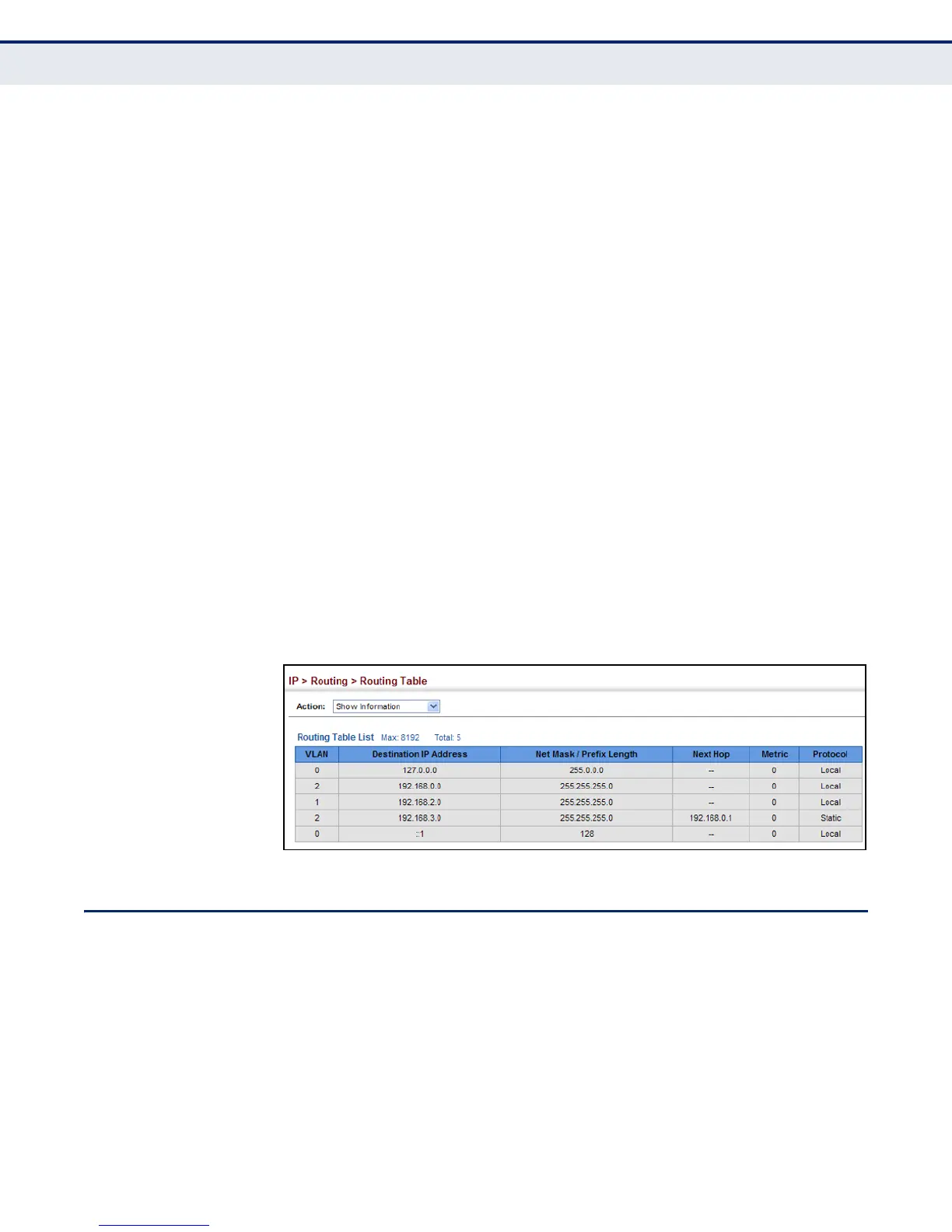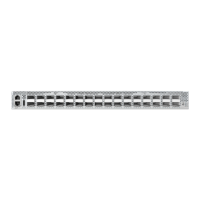C
HAPTER
17
| General IP Routing
Equal-cost Multipath Routing
– 450 –
PARAMETERS
These parameters are displayed in the web interface:
◆ VLAN – VLAN identifier (i.e., configure as a valid IP subnet).
◆ Destination IP Address – IP address of the destination network,
subnetwork, or host. Note that the address 0.0.0.0 indicates the
default gateway for this router.
◆ Net Mask / Prefix Length – Network mask for the associated IP
subnet. This mask identifies the host address bits used for routing to
specific subnets.
◆ Next Hop – The IP address of the next hop (or gateway) in this route.
◆ Metric – Cost for this interface.
◆ Protocol – The protocol which generated this route information.
(Options: Local, Static, RIP, OSPF, Others)
WEB INTERFACE
To display the routing table:
1. Click IP, Routing, Routing Table.
2. Select Show Information from the Action List.
Figure 273: Displaying the Routing Table
EQUAL-COST MULTIPATH ROUTING
Use the IP > Routing > Routing Table (Configure ECMP Number) page to
configure the maximum number of equal-cost paths that can transmit
traffic to the same destination. The Equal-cost Multipath routing algorithm
is a technique that supports load sharing over multiple equal-cost paths for
data passing to the same destination. Whenever multiple paths with equal
path cost to the same destination are found in the routing table, the ECMP
algorithm first checks if the cost is lower than that of any other entries in
the routing table. If the cost is the lowest in the table, the switch will use
up to eight of the paths with equal lowest cost to balance the traffic
forwarded to the destination. ECMP uses either equal-cost multipaths

